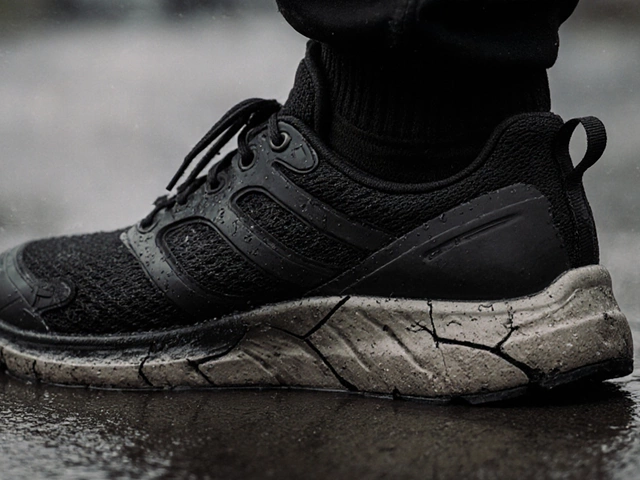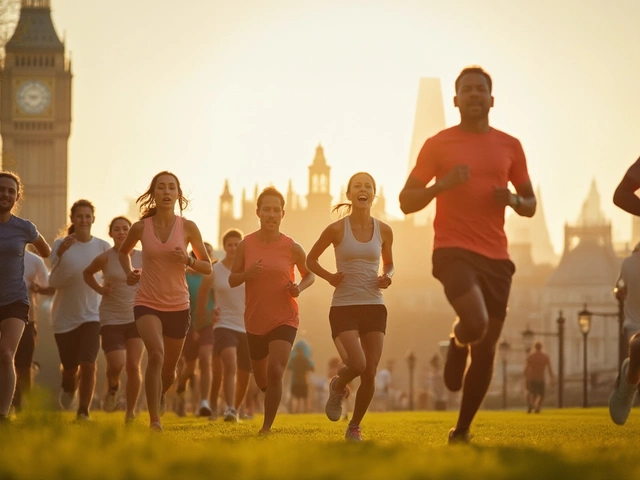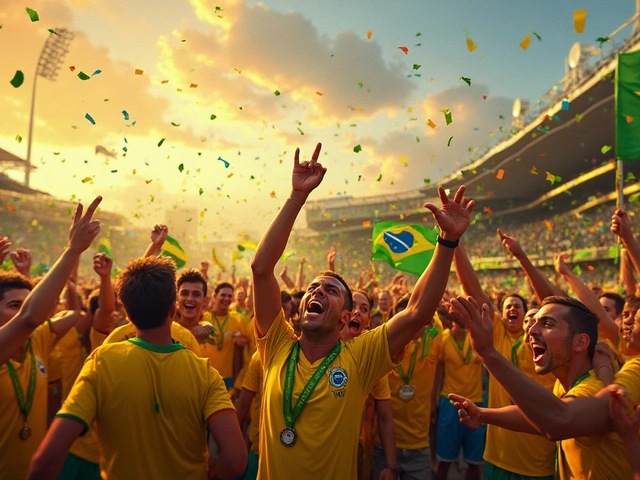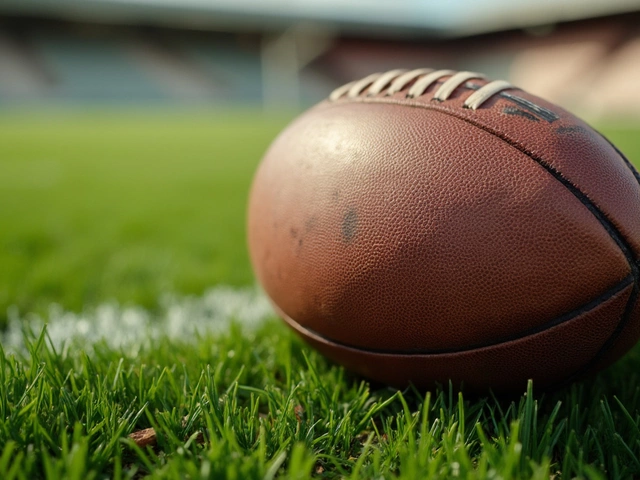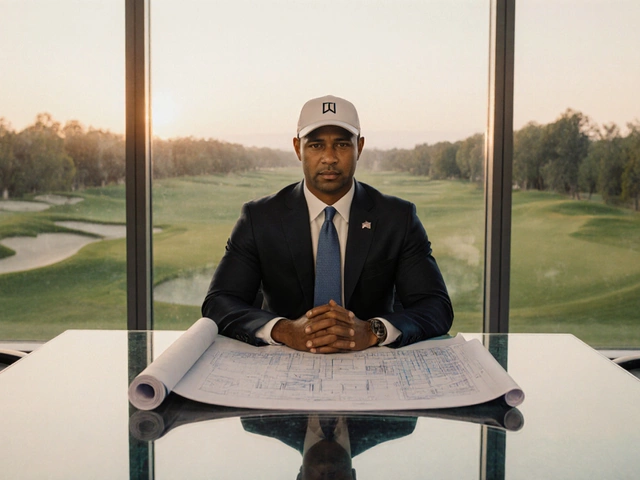Sports Equipment Examples: A Straightforward Guide
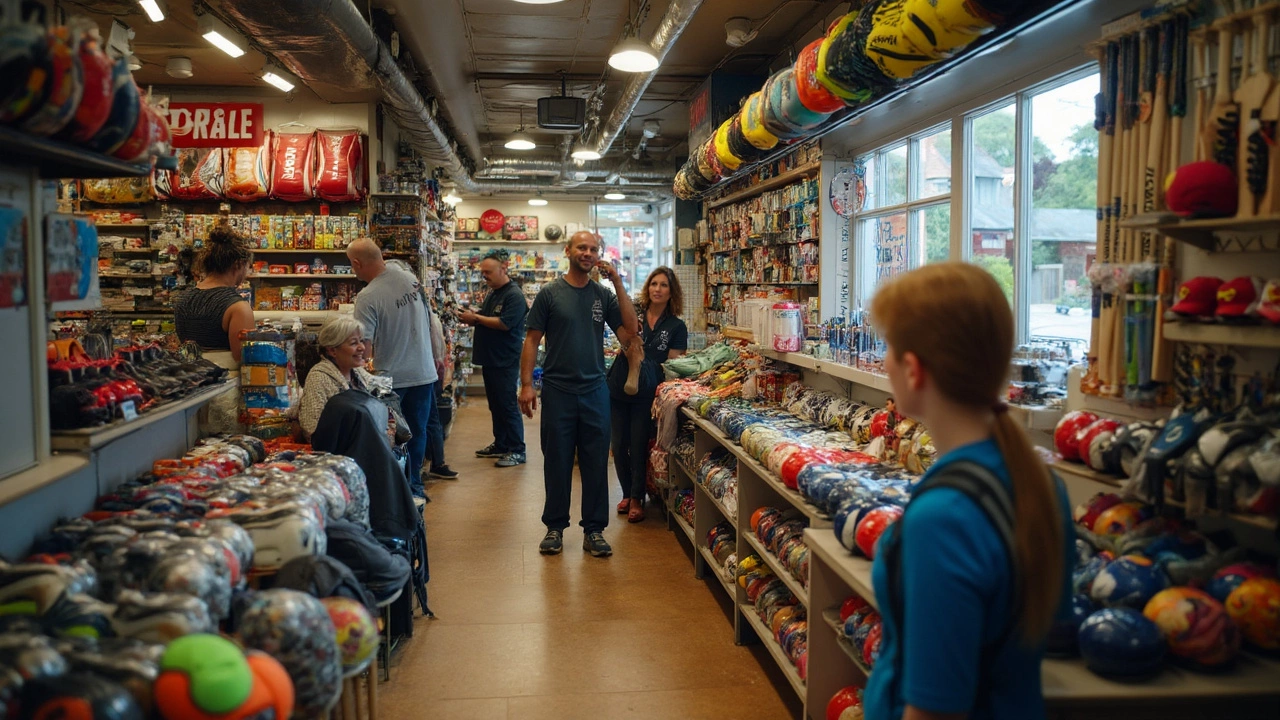
Ever stand in a sports store and wonder if you really need all that stuff? You're not alone. Sports equipment covers anything you use to play, train, or stay safe while doing your thing—think balls, bats, pads, nets, even water bottles for certain sports. Basically, if you need it for the game or practice, it's fair game.
But here's where it gets interesting: not all gear is created equal. Some equipment is all about performance, like a perfectly balanced basketball or the right running shoes to protect your knees. Others are there for safety, like helmets or mouthguards. The right choice can actually make you better and keep you on the field, not benched with an injury.
- What Counts as Sports Equipment?
- Popular Examples by Sport
- How to Choose the Right Gear
- Unexpected Equipment You Didn't Know About
What Counts as Sports Equipment?
You might think "sports equipment" just means big, obvious stuff like balls or rackets, but it actually covers way more. Basically, if you need it to play, practice, compete, or stay safe, it counts. Here’s what falls under this heading:
- Game-specific gear: Things like basketballs, tennis rackets, baseball bats, soccer balls, and golf clubs. These are the essentials you need to actually play the sport.
- Protective gear: Think helmets, shin guards, gloves, mouthguards, and pads. In sports like football and hockey, using the right protection is non-negotiable. The CDC reports that wearing a helmet can reduce the risk of serious head injury by up to 85% in cycling and similar sports.
- Apparel and footwear: We’re talking about anything designed for performance or safety—cleats for soccer, spikes for running, swimsuits for competitive swimming, and even yoga socks.
- Training aids: Sometimes, equipment is just for practice—cones for drills, resistance bands, jump ropes, and balance boards. These extras help you get better, faster, stronger.
- Accessories: Even water bottles, sports watches, and towels count if they’re made specifically for sports.
To see how much variety there is, check out the quick table below with examples from popular sports:
| Sport | Main Equipment | Protective Gear | Other Essentials |
|---|---|---|---|
| Soccer | Ball, goals | Shin guards | Cleats, water bottle |
| Basketball | Ball, hoop | Knee pads (optional) | Court shoes, sweatband |
| Baseball | Bat, glove, ball | Helmet, catcher’s gear | Cleats, batting gloves |
| Swimming | Swimsuit, goggles | Swim cap (optional for safety) | Kickboard, towel |
The bottom line? If you use it to play, protect yourself, or boost your performance, it’s considered sports equipment. Even the little things matter more than you might think. Knowing what you need is the first step to playing better—or just enjoying yourself a lot more.
Popular Examples by Sport
When it comes to sports equipment, you’ll notice each sport has its own must-haves. There’s no one-size-fits-all—footballs look nothing like tennis rackets, after all. Let’s run through some real-world examples so you know exactly what’s needed for some of the most played sports out there.
- Football (Soccer): All you really need is a ball and a pair of sturdy cleats to start. But for matches, you’ll see shin guards, goalie gloves, and sometimes even specialized jerseys depending on position.
- Basketball: The two big things? A well-inflated basketball and a hoop. Serious players invest in high-traction shoes (ankle support is no joke here) and finger tape for better grip.
- Baseball: You’ll spot bats, gloves, helmets, and cleats on nearly everyone on the field. Catchers wear extra gear: a mask, padded chest protector, and shin guards for safety.
- Tennis: Rackets are key, of course, but shoes designed for quick sideways moves matter just as much. Don’t forget the small stuff like sweatbands and overgrips.
- Swimming: Not much needed besides a quality swimsuit and goggles, though competitive swimmers are picky about swim caps and racing suits to cut time by even a fraction of a second.
- Hockey (Ice and Field): Both versions need sticks and protective gear. Helmets, mouthguards, and pads help avoid nasty injuries, especially in ice hockey where pucks fly fast.
Want to geek out a little? Here’s a quick look at how different sports compare when it comes to their most important gear:
| Sport | Essential Equipment | Typical Cost Range (USD) |
|---|---|---|
| Soccer | Ball, cleats, shin guards | $40–$150 |
| Basketball | Ball, shoes | $60–$200 |
| Baseball | Bat, glove, helmet | $100–$400 |
| Tennis | Racket, shoes, balls | $80–$250 |
| Swimming | Swimsuit, goggles, cap | $30–$120 |
| Ice Hockey | Stick, helmet, pads | $300–$1000 |
If you look closely, safety gear almost always makes the list. No surprise—staying in the game matters more than going cheap. And remember, what you need for the backyard isn't always enough when you get more competitive. Quality matters, and so does checking league rules, since some require equipment to meet certain standards. Now that you have a feel for popular gear, you’re ready to pick what’s right for you.
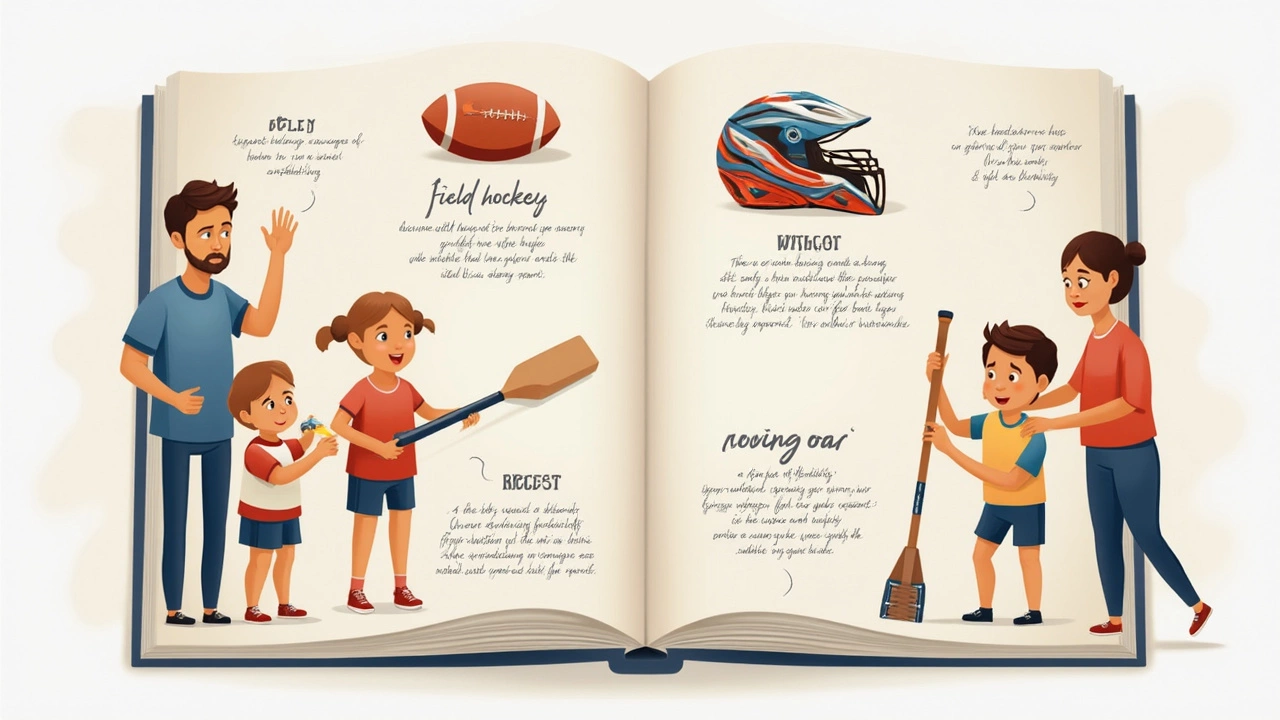
How to Choose the Right Gear
If you've ever felt lost picking out sports stuff, you're not the only one. The choices can feel endless, but you can skip the guesswork by focusing on a few basics. The right sports equipment doesn't need to be expensive or flashy, but it does need to fit your needs and protect you.
Start by thinking about your sport and skill level. Total beginner? Go for simple gear before you splurge on pro models. Some high-end gear could actually hurt your game if you're not ready for it. For example, an advanced tennis racquet may make things harder for new players—lighter and more basic works best at first.
- Fit matters more than price. For shoes, pads, and helmets, make sure they actually fit. Sizing isn't the same across brands, so try things on or measure your feet and head if you're ordering online.
- Look for safety features. For anything that protects you—like bike helmets or shin guards—check for safety certifications or approval seals. In the US, for example, football helmets have to meet standards set by NOCSAE. Those stickers aren't just decoration!
- Consider the surface you'll use it on. Cleats change a lot depending on whether you're on turf, grass, or court. The wrong type won’t just mess up your game, it can actually cause injury.
- Weight isn't just about preference. Lighter gear can mean easier handling—think bats, racquets, and sticks. But too light and you lose power or control. Try before you buy, or borrow gear to get a feel for what works best for you.
- Don’t be fooled by style. Flashy colors and cool designs don’t make up for bad fit or quality. Ask people you trust or check reliable reviews before jumping for the trendiest option.
If you're shopping for team sports equipment, listen to your coach about approved brands or styles—some leagues have weirdly strict rules. If you're serious about progress, keep track of what works by writing notes after games or practices. Small details, like blisters or slipping shoes, tell you more than any ad ever could.
Bottom line: comfort and safety should always come first, and pricier doesn’t always mean better. Good gear helps you focus on fun and improving, not fussing over what hurts or what keeps falling off mid-game.
Unexpected Equipment You Didn't Know About
You'd be surprised at what counts as sports equipment. Sometimes it goes way beyond the balls and bats. Ever seen swimmers wearing nose clips? They’re a game-changer for folks who struggle with water up their nose during backstroke. Or consider the tape you see on athletes—kinesiology tape helps relieve pain and supports muscles during tough workouts. It's pretty popular at big events, and not just a trend.
Then there’s grip-enhancing chalk for weightlifters and climbers. If you think chalk is just for blackboards, watch a pro lifter prep at the gym. It keeps hands dry, improves grip, and helps prevent slips, which actually cuts down on injuries. Table tennis players use rubbers and glues on their paddles, which shape how the ball spins and bounces—a detail that can totally change a match.
Water is a must-have, but did you know some athletes now rely on hydrating gels and special electrolyte drinks? Distance runners and cyclists swear by these to keep their energy up for hours. Sports technology has gone even further—GPS watches and heart rate monitors track your moves and effort in real time, helping both newbies and pros up their game.
Here’s a quick look at how some “unexpected” equipment stacks up in real life:
| Equipment | Sport | Why It Matters |
|---|---|---|
| Kinesiology Tape | Running, Volleyball | Supports joints, reduces pain |
| Nose Clip | Swimming | Prevents water inhalation, aids focus |
| Grip Chalk | Climbing, Weightlifting | Improves grip, prevents slips |
| Hydration Gel | Running, Cycling | Boosts endurance, replaces nutrients |
| Rubbers/Glue for Paddles | Table Tennis | Alters speed/spin of ball |
| GPS Watch | Multiple | Tracks stats, helps with training |
If you’re thinking about trying a new sport or stepping up your game, don’t overlook the small stuff. That odd piece of kit could be the thing that gives you an edge—or keeps you feeling good and injury-free.
